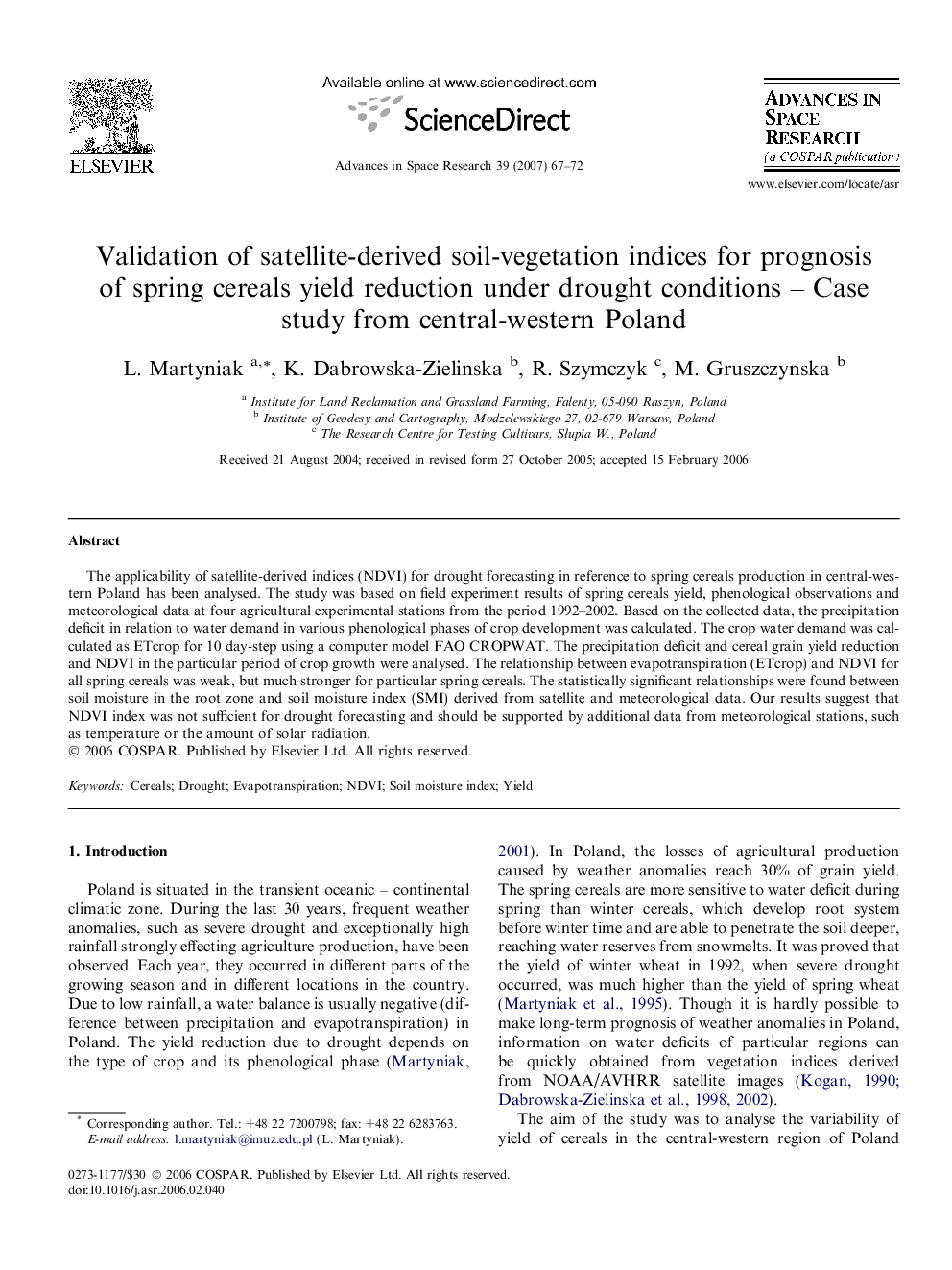| کد مقاله | کد نشریه | سال انتشار | مقاله انگلیسی | نسخه تمام متن |
|---|---|---|---|---|
| 1769171 | 1020259 | 2007 | 6 صفحه PDF | دانلود رایگان |

The applicability of satellite-derived indices (NDVI) for drought forecasting in reference to spring cereals production in central-western Poland has been analysed. The study was based on field experiment results of spring cereals yield, phenological observations and meteorological data at four agricultural experimental stations from the period 1992–2002. Based on the collected data, the precipitation deficit in relation to water demand in various phenological phases of crop development was calculated. The crop water demand was calculated as ETcrop for 10 day-step using a computer model FAO CROPWAT. The precipitation deficit and cereal grain yield reduction and NDVI in the particular period of crop growth were analysed. The relationship between evapotranspiration (ETcrop) and NDVI for all spring cereals was weak, but much stronger for particular spring cereals. The statistically significant relationships were found between soil moisture in the root zone and soil moisture index (SMI) derived from satellite and meteorological data. Our results suggest that NDVI index was not sufficient for drought forecasting and should be supported by additional data from meteorological stations, such as temperature or the amount of solar radiation.
Journal: Advances in Space Research - Volume 39, Issue 1, 2007, Pages 67–72